- West End & London Musicals
- Musicals on tour
- Edinburgh Festival Fringe 2024

Equity and Non-Equity Tours Explained

In the world of US theatre, productions are often categorised into two main types: equity and non-equity productions and tours.
This classification is crucial for performers, creators, and the audience alike, as it impacts everything from the rights of actors to the quality and reach of the productions.
Let’s delve into what distinguishes equity shows from non-equity ones and the implications of these differences.
What Are Equity Shows?
Whether its a play, concert or musical, Equity shows are produced under the rules and guidelines of the Actors’ Equity Association (AEA), the union that represents actors and stage managers in the United States.
Equity, established in 1913, aims to ensure fair treatment, wages, and working conditions for its members.
Shows that are produced under an Equity contract must adhere to strict guidelines regarding rehearsal times, performances, salaries, and benefits for the actors and stage managers involved.
One of the key benefits for performers working in equity shows is the provision of health insurance, pension, and other benefits, which are often not available to performers in non-equity productions.
Equity shows also tend to have higher production values and budgets, attracting well-known and more experienced talent both on and off the stage.
What Are Non-Equity tours?
Non-equity shows, on the other hand, are not bound by the rules and regulations of the Actors’ Equity Association. These productions do not provide the same level of benefits or protections to their performers as equity shows do.
Non-equity actors are often early in their careers, seeking experience and exposure.
While these shows can offer valuable opportunities for emerging talent, they also come with risks, such as lower pay, longer hours, and less job security.
Choosing Between Equity and Non-Equity
For actors and stage managers, the decision to join the Actors’ Equity Association and pursue work in equity shows is significant.
It can open doors to higher-profile jobs and better working conditions – but may also limit the number of available opportunities, especially in regions with fewer equity theatres.
Audience members, too, may notice differences between equity and non-equity tours. Equity shows will often feature seasoned professionals and have higher production budgets – but also higher ticket prices to compensate.
More on: Features
UK based freelancer journalist Rachel contributes regularly to Stageberry with features and interviews from the hottest new shows and stage stars.
popular now

Gutenberg! The Musical Broadway cast album released

The London Palladium opens for new backstage tours

Kym Marsh and Faye Tozer to star as Cruella de Vil in 101 Dalmatians musical tour

Musical Con 2024 dates, tickets and line up

Kerry Ellis and John Owen-Jones to headline at new King's Head Theatre

Closer to Heaven revival to run at London's Turbine Theatre

Lucie Jones in Concert

The Secret Garden

Carousel in Concert

Your Lie in April

Something Rotten! In Concert

101 Dalmatians musical

The National Tour: A Beginning Guide
- Posted on August 21, 2016 March 31, 2020
- 5 minute read
- by Rob Richardson
Hello faithful readers! We here at StageAgent are humbly embarking on a multi-part series breaking down that Golden Fleece of an actor’s desire—the National Tour. Over the course of the next several months we will be examining the attraction, benefits, potential downsides, and financial realities of living out of your suitcases for a few months or even a few years. We hope to cover topics that will apply to both Equity and Non-Equity tours, from a 4-person children’s show to a cast of dozens (the Hal Prince Show Boat had a cast somewhere near 70). And as always, if you have specific questions or topics you’d like discussed further, just leave us a comment and we’ll do our very best to address them all.

I feel we must start with some sort of definition as to what qualifies as a National Tour. You’d be surprised (or maybe not) at the hours that are spent trying to decide on a resume what is a tour and what isn’t. At the most basic level, a National Tour is a show that is presented across various locations in multiple states. It can be union or non-union. You can run for a few weeks, perhaps during the holiday season, or nearly 20 years (here’s looking at you, The Lion King ). When a show goes directly from Broadway to the road, it can be called the First National Tour, then as casts change you can be the Second, or Third, though at this point I’m not sure there’s really a difference. Actors like to label things, especially if it helps the resume.
The tour can often be that first carrot to a young actor fresh out of college. They are attractive for many reasons: there’s a certain prestige, hopefully a good salary, and the chance to hone your skills and craft over potentially hundreds of performances, just to name a few. Tours can also appeal to seasoned veterans of the theatre, as they offer a chance to “get out of town” and regroup; perhaps they can save some money while subletting an apartment, or play a great role they’ve always wanted to play. So with these notions before you, we ask the question, “ Why wouldn’t I want to do a tour?”
There’s a lot to recommend, but the tour is not without complications. First of all, if you are a young actor, your goal is to get established in whatever city you call home base. (Tours cast all over the country by the way, everywhere from New York City, Chicago, Los Angeles, Atlanta, Orlando; I’ve even seen Salt Lake City.) So the very nature of doing a National Tour is contrary to that goal, as you simply won’t be around for anyone to get to know you. But these cities carry a high cost of living, so getting out of Dodge to save some money might not be the worst idea.
One of the sheer joys I currently have in my life is my ability to go to my show and then… go home. I don’t have to leave my family for months at a time; they are right there where I left them when I got on the train to NYC. But of course on tour, it’s unlikely (not impossible) that you will have your loved ones with you. On top of that, you’re basically committed to spending a huge amount of your time with the people in your show. That can be great, some of my best friends in life came from the tours I was lucky enough to do. But what if you don’t really connect with anyone on the road, or worse, actually dislike being with them? There’s not much escape. In a union tour you have the option of your own room (because you usually pay for it from your per diem—that’s a later post), but on a non-union tour you probably have a roommate, unless you’re a star. Personal example: I played Ravenal (the male lead) in a Non-Equity tour of Show Boat , and I shared a room with not one but two cast mates, both very good friends, to save money. We would get a room with two beds, and every third week, one of us would sleep either on a cot or on the floor. Hi ho, the glamorous life.

And while there is certainly a lot to be said for doing the same show literally hundreds of times, maybe it’s not for you. Maybe you’re the kind of actor who prefers a summer stock or rep company approach, where you do something different every so often (perhaps every night). For clarity’s sake, in the largest tours (and of course on Broadway) if you are lucky enough to be employed for a solid year and never miss a performance, you’ll do 400 performances of the same show (8 performances a week x 50 weeks, assuming you use your vacation weeks). That might not sound appealing to everyone.
Also you have to consider what it is you would be asked to do. We can assume that you auditioned for the job, but maybe you got a role that doesn’t interest you, or a chorus position when you were dying to play the lead. Perhaps you auditioned for a touring children’s theatre company, but upon being hired you realized that not only were you the star of the piece, but also the assistant stage manager and van driver, and that you would be loading and unloading set pieces at the crack of dawn into school “gymnatoriums.” I’ve seen people quit Broadway shows while in rehearsal when they realized they weren’t happy with what they were charged to do. Shocking, but it does happen.
You need to be armed with all the information possible. From my perspective, everyone should tour at least once. You should know the feeling of being a tight-knit community, bound together in strange cities both small and large. You need to know what it takes to perform night after night, sometimes with variations in your environment (less wing space, no crossover, dressing room on the fifth floor). I haven’t seen very much of the world, but I’ve seen 48 of the 50 states (Hawaii and Montana, if you’re wondering), and that’s all because of the handful of tours I’ve been on.
So welcome to the touring series, we’ll be exploring such topics as financial practices, how to pack, how to stay healthy, housing options, when it’s time to go home, the major players in the touring market, and many other topics. Let us know your questions! Till next time…

Rob Richardson
Rob Richardson is an actor, trainer, blogger, husband, and father. Your basic superhero. He spent a good part of 2017 sailing the Caribbean as the Broadway Guest Artist on the Disney Fantasy, appearing in Aladdin: A Musical Spectacular and Disney's Believe. Broadway/Off-Broadway: Jekyll & Hyde, A Tale of Two Cities, Clinton the Musical, and The Fantasticks. Follow Rob on Twitter @traininghumanT, and read his other musings on health and wellness at www.traininghumanity.blogspot.com.

- Design / Tech
I Left My Heart in Summer Stock
- Posted on August 10, 2016 March 31, 2020
- by Amy Bobeda
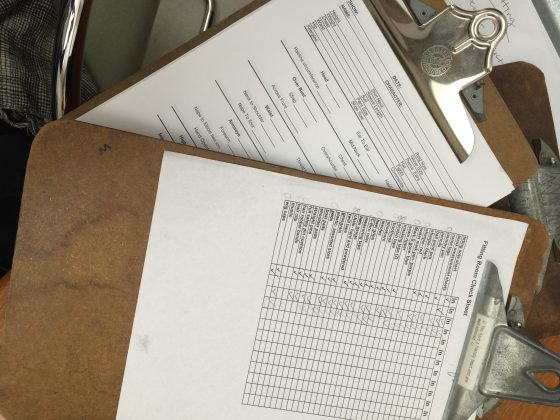
- Makeup/Costumes
Costume Fittings: Where Character Meets Design
- Posted on August 28, 2016 March 31, 2020
You May Also Like

The Ultimate Triple Threat: What is a Swing?
- Posted on April 2, 2024 April 3, 2024
- by Emma Houlahan

Discover the Art of Silence
- Posted on March 8, 2024 March 8, 2024
- by Kevan Dunkelberg

How to Shine at Showcase
- Posted on March 1, 2024 March 1, 2024
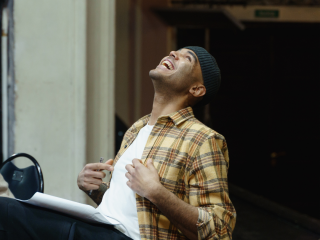
- Audition Tips
Bringing your Authentic Self into the Audition Room
- Posted on February 23, 2024 February 23, 2024
- by Laura Josepher

How to Rehearse a Monologue
- Posted on February 2, 2024 February 2, 2024

Top 5 Tips on Acting Through Song
- Posted on January 26, 2024 February 6, 2024

- Teaching / Classroom
Theatre Degrees: What Are Your Options?
- Posted on January 18, 2024 January 26, 2024
- by Cindi Calhoun

Playing with Actions – Using Actions & Tactics
- Posted on January 6, 2024 January 10, 2024
Leave a Reply Cancel reply
Your email address will not be published. Required fields are marked *
Join StageAgent and Ace Your Auditions
Enjoy the ultimate theatre research and networking platform. StageAgent helps performing artists save time, improve their craft and discover opportunities.

Create Your Profile
Display your headshots, credits and skills to showcase your talent.

Read Expert Guides
Prepare for your next role by studying our expert show guides.

Find Audition Materials
Explore hundreds of monologues, scenes and audition songs.

Discover Audition Notices
Find performing and backstage opportunities in your city.
SIGN UP TODAY
Input your search keywords and press Enter.

difference between equity and non equity tours

Broadway Legend Joined: 6/18/06
#1 difference between equity and non equity tours
What is the difference between non eq and equity tours. I know there are some broadway shows such as RENT that choose to do non eq tours. But, why is it that there are some peopel on this board who say that they hope such and such a broadway tour does an equity tour cus it would suck if it were to be non eq. I mean is it like there wouldbe a difference between the acting? I think that a non equity cast can put on just as good a show as an equity cast.

LizzieCurry Profile
Broadway Legend Joined: 3/7/05
#2 re: difference between equity and non equity tours
PAGING MICHAEL KOSTROFF! PAGING MICHAEL KOSTROFF! PAGING MICHAEL KOSTROFF!

TheatreDiva90016
Broadway Legend Joined: 4/10/04
I just ran into Michael a little over a month ago. We kissed and made up. I still have to read his book.
SeanMartin Profile
Broadway Legend Joined: 9/4/06
#3 re: difference between equity and non equity tours
I've seen both kinds of tours, and these days, there's precious little difference. More often than not, both are equally bad and equally sloppy (case in point for all the Equiy supporters out there: the current tour of TMM, which has to be one of the worst productions around).
Justin D Profile
Broadway Legend Joined: 4/11/05
#4 re: difference between equity and non equity tours
Ive always assumed that an equite show remains as alose to the broadway version as possible (sets & costumes) while a non equity tour can do as they like, usually wuth disasterous results. but i could be wrong
#5 re: difference between equity and non equity tours
That is not always the case. There tours of broadway shows that choose to be equity but unless someone told you that you wouldn't be able to tell the diffference in terms of production value. I know that RENT is non eq so that they can wided the choices of young actors they have to choose from at the auditions. I also know that the national tours of hairspray and producers are non equity as well.
Broadway Legend Joined: 12/31/69
#6 re: difference between equity and non equity tours
winston, they chose to be non equity to save the butt load of money. Not to have more young actors. They can find young actors and make them union if they want. The difference is they pay non equity actors FRACTION what they pay union actors. Non are less experienced, younger and generally not as talented or polished. Shows like "hairspray" it doesn't really matter because they always use young people anyway...HOWEVER....it sucks for people in the union because they are loosing precious jobs!

Rathnait62 Profile
Broadway Legend Joined: 6/3/04
#7 re: difference between equity and non equity tours
Not necessarily, Mercades. I was called back for the non-equity HAIRSPRAY, and I'm 44. I saw the others there for the roles of the adults and they were all my age and older. And the money offered was not bad at all - in fact, significantly more than what I'm currently making sitting behind a desk for 9 hours a day. I'm not saying that's ALWAYS the case - I also went in for the non-union MILLIE and saw girls MUCH younger than I there for the same role, as well older than I. I don't know how they ended up casting it.
NathanLaneStalker Profile
Broadway Legend Joined: 5/11/06
#8 re: difference between equity and non equity tours
Avenue Q also hires Non eq. actors...so I hear.
#9 re: difference between equity and non equity tours
Every show can hire non-equity ACTORS. We're talking about the entire production here.
#10 re: difference between equity and non equity tours
I know they need 30+ for the adult roles for "hairspray"....however....75% of that show is kids. the money for non equity tours is nothing compared to a production contract. They probably offered around the $800 mark, when on a production contract that is simply your per diem. The money is not unemployment here....but it is a fraction of a equity production contract. The bottom line is: the producers are charging the same price for tickets....but paying the actors half the amount. The producers make out like bandits when choosing a tour to go non equity.
#11 re: difference between equity and non equity tours
#12 re: difference between equity and non equity tours.
that's awesome it was so much. I have a friend who is a dynamite, and I thought her pay was offensive. We should be paid MUCH MUCH more. Especially that show is so physically taxing.
Broadway Star Joined: 10/14/06
#13 re: difference between equity and non equity tours
Well I heard that the AIDA tour (I saw it yesterday) was non - equity, but I wasn't sure. I didn't see the Broadway production but I heard that the two are very different. For example, in this one the props & costumes aren't neccasarily from that time period, like they wear jeans & pinstripe suits & stuff. But it worked well. Anyways, I have nothing to compare it to, so I'm not entirely sure.
#14 re: difference between equity and non equity tours
Yeah, I don't know what they were being offered. My part wouldn't have required any dancing, so hardly physically taxing.
bwaysinger Profile
Broadway Legend Joined: 1/13/04
#15 re: difference between equity and non equity tours
hehe. I love discussions of the union. The difference between the tours is 100% answered in the title of this thread. That's the real, tangible difference. Quality is...well, harder to define. Generally, the Equity tours of Broadway shows tend to recreate the original staging, original costumes, original orchestrations (etc) and even get original stars to tour while non-equity tours often have reduced each aspect of the show in order to both save money and also book the show into smaller markets. My hometown almost solely featured non-equity tours (usually one large-scale show - like Cats - could afford a week sitdown or more but mostly we're talking one or two nights) that flew in for a day and out the next; very much the definition of bus-and-truck. As for quality of performance...that's just apples and oranges. I think we're all in agreement here that having a union card doesn't automatically qualify you as a better performer. But I will say that the rate of pay is almost across-the-board unfair on non-equity tours. The very first role I was offered in NYC was a non-equity tour...for $300 a week. I ended up taking a union job with a children's theatre for almost twice that plus per diem and followed that with an overseas job (which was non-union) for twice the children's pay.
erinrebecca
Broadway Legend Joined: 10/29/04
#16 re: difference between equity and non equity tours
Would just like to make three points: 1. There is no definitive answer about talent, experience, use of original sets or production values, in non-Equity vs. Equity productions. 2. I have never seen even one non-Equity show that charges the same price for its tickets as any Equity show. In any case, the venues set ticket prices, not the tours. 3. If Equity is so concerned about these non-Equity tours, there's an easy solution. Extend an offer of Equity cards to these actors, or at least ease the ridiculous requirements for earning through the membership route.
#17 re: difference between equity and non equity tours
erin, Equity doesn't want to add that huge amount of further competition to their membership. That's why it's so difficult to join, unless of course you are cast in a Broadway show/National Tour, in which case you're automatically a member. It's self-preservation.
#18 re: difference between equity and non equity tours
Rath, I'm well aware of that. That was my point! They should quit bitching and moaning about non-Eq tours and the fact that those shows are "taking away Equity members' jobs".


HumATune Profile
Broadway Star Joined: 4/7/06
#19 re: difference between equity and non equity tours
I have no problem with non-equity tours if a show has played out equity tours first, such as RENT. However if SHNSF ever makes a non-equity tour part of their “Best Of Broadway” series, they will get a piece of my mind.

Neverandy Profile
Broadway Legend Joined: 6/6/06
#20 re: difference between equity and non equity tours
So much mis-information in this thread. Erin-Equity wants as many people as possible to join as possible. IF you knew the status of the Health fund, you would never make such a claim. This year they have made all qualifying actors pay a quarterly fee to continue health benefits. This is in addition to working the minimum qualifying weeks. As a member I am not at all threatened by the union having more people. However I wonder what Non-Union performers would think if Equity started allowing its members to perform Non-union work. There would be riots at Chelsea, Nola, and Ripley Grier! The membership requirements are not at all restrictive to join Actors Equity. If anything they have made it easier than ever to join and get seen. Since last year, Equity has allowed all membership candidates to be seen at all auditions before non-membership candidates when time allows(and after all full members have been seen). There are currently over fifty theaters in the U.S. that offer the membership candidate program, as well as hundreds that just simply offer you a contract. If you are an Actor in the New York area who has the talent and the drive to have a career, then there should be no problem getting your Equity Card. The requirements are there to make sure that those who become members are serious about their commitment to making acting their profession and not just something that they do for fun. As for the statement that Non-Eq tours don't charge the same amount for tickets as Equity ones-I know first-hand that this is not true. I performed in Non-Eq tours years ago and when we went into major markets (Boston,D.C, Atlanta, etc.) we were charging the same prices as Les Mis or Phantom. Really sobering when you are cashing your $300 paycheck. That being said, I wouldn't trade that experience for the world. P.S. -we used the sets and costumes from the Broadway production on that tour.
#21 re: difference between equity and non equity tours
Rath what happened? I want to hear all about "The Hairspray Tour"-- Starring Rath! I assume you were up for "authority figure" but I'm daydreaming you as Motormouth or Edna.....
#22 re: difference between equity and non equity tours
Well, I was all prepared to audition for Motormouth, but I was typed out, if you can believe it.
#23 re: difference between equity and non equity tours
OH! The production! haha. Sorry.
#24 re: difference between equity and non equity tours
Neverandy, I'm am very well acquainted with the requirements to become an Equity member, and I fully understand the issues involved. My point is that Equity continues to bemoan the fact that there are an increasing number of non-Equity tours, yet those same tours are the ones which give jobs to newly graduated actors and allow them the experience they need in a professional environment. Instead of supporting this, even just in theory, Equity denigrates the tours, organizes boycotts of the shows, and complains that its members are losing these jobs. I was somewhat facetiously suggesting that a solution would be to give every graduating actor an Equity membership and it would eliminate the existence of non-Equity tours. I am well aware that this will never happen and is not practical, I'm not delusional. I simply get tired of the Equity complaining and attitude. I have many friends who are currently on tour in non-Equity productions and, amazingly enough, they are very happy with their experiences and are gaining valuable professional experience and, honestly, are having a blast. As for ticket prices, the non-Eq tours I've seen in the past five years have usually had a top price in the $50-60 range. I haven't seen a price that low for an Equity tour in more than ten years.

Recommended For You


- Entertainment
- Rex Reed Reviews
- Awards Shows
- Climate Change
- Restaurants
- Gift Guides
- Business of Art
- Nightlife & Dining
- About Observer
- Advertise With Us
Non-Equity ‘Waitress’ Musical Tour Files for Union Recognition
In its first card campaign on a national tour in twenty years, actors' equity files with the national labor relations board to unionize 'waitress.'.

For the first time in twenty years, Actors’ Equity is unionizing a national tour. They have filed with the National Labor Relations Board after conducting a card campaign among actors and stage managers working the nonunion touring production of Waitress . They are currently awaiting a response from their employer, the touring production company NETworks.
Sign Up For Our Daily Newsletter
Thank you for signing up!
By clicking submit, you agree to our <a rel="nofollow noreferer" href="http://observermedia.com/terms">terms of service</a> and acknowledge we may use your information to send you emails, product samples, and promotions on this website and other properties. You can opt out anytime.
NETworks did not respond when reached out to for comment for this article.
According to Equity’s Mobilization Director, Stefanie Frey , the main impetus to unionize the tour was the fact that there are two Waitress tours currently running: one union, the other nonunion. In the nonunion tour, actors and stage managers are making a third as much as the workers on the union tour. Their daily expense allowance on the tour is so low that they are digging into their own savings to pay for food and transportation. One performer is working a day job. Others are going into debt to pay their bills.
Despite the vast gulf between what the workers on the union show are being paid and what the workers on the nonunion show are being paid, the shows themselves are essentially the same. The actors are equally talented and union actors are trained from performance videos from the nonunion show. The shows share props and set pieces. Sometimes they even share performers. Actors who started on the nonunion tour have been moved to the union tour, and even transferred to the Broadway show. According to Frey, the non-Equity show is used as a talent pool: performers are trained and rehearsed on this show while being paid extremely low wages. These exploited workers, having been trained on the non-Equity tour, can then be moved to other productions. This saves time and money on casting and training for the other shows.
This pool of poorly paid but highly trained talent from the nonunion show also helped the Broadway production of Waitress stay open during the Omicron surge . When performers were testing positive in droves and needed to be sent home, touring performers stepped into their roles and kept the lights on for Broadway.
All these factors raised a lot of red flags for Equity, which has changed its organizing philosophy in the last six years and made a turn towards increased member engagement. Frey told Observer they have “recentered on the worker and how we can help the worker take the power back in their workplaces.”
Equity is organizing this tour in a far friendlier labor climate than anybody’s seen in over a generation. President Biden’s National Labor Relations Board has helped along the tremendous organizing efforts at Starbucks and Amazon, and inspired workers across the nation to organize their workplaces. Frey told Observer that the cast and organizing leaders on the nonunion tour of Waitress were inspired to unionize because of unionizing workers in other industries.
“I think all of us are really empowering each other through our various workplaces even across industries,” Frey told Observer. “We hope that we can inspire someone else that might be thinking about organizing their workplace.”
Showing solidarity for unionizing workers everywhere is both heartwarming and highly strategic: however different these industries may be, when it comes to the anti-union tactics of their employers, these workers are all in the same boat. NETworks, the nonunion touring company, has employed the anti-union law firm, Littler Mendelson in combating their workers’ NLRB filing. This is the same firm used by Starbucks in their union busting campaigns nationally.
It is Equity’s hope that organizing this tour of Waitress will inspire other nonunion tours to unionize. “I’m hopeful that more and more people in our industry will take their power back and realize that just because there’s a lot of workforce available in our industry doesn’t mean that you need to get exploited,” Frey told Observer.
Performers need exposure at the beginning of their careers. They also need to pay their bills. The relatively high salaries and extended runs of Equity tours are a lifeline for actors, and younger performers in particular. In an industry where precarity is the norm, where bouncing back and forth between acting gigs and retail and service jobs is routine, an Equity tour can be your ticket to a degree of career stability. The growth of nonunion tours in the 21 st century has eaten away at a chunk of the income for actors and stage managers. Nonunion tours are doubly unjust because tickets to these shows are now nearly as much as tickets to Broadway shows, even while the touring company is spending a third to half as much on the production because they pay their performers and stage managers so little.
According to Gotham Gazette , these productions can remain nonunion while maintaining close relationships with union shows by subcontracting and exploiting legal loopholes. So long as the producer isn’t the producer on the Equity paperwork then a show can run nonunion. Broadway producers are members of the Broadway League and therefore unable to make non-Equity contracts. However, this barrier doesn’t prevent them from forming business relationships with nonunion touring companies. Actors’ Equity member and labor organizer Dana Steer told Observer that many such producers have non-union producing partners through whom they license their show to one of the big touring companies, like NETworks.
Through such loopholes nonunion tours have increased exponentially in the last twenty years. It is because of these loopholes that the union and nonunion productions of Waitress share not just performers but also managers. According to Frey, the producer of the nonunion show is also the general manager of the Equity tour. Organizing this card campaign has allowed Equity a path towards rooting out such shadowy subcontracting among national touring companies.
“The work we do is the same work our friends in the Equity tour do,” said members of the non-Equity tour in a statement issued by Actors’ Equity, “so we are asking our employers why we can’t be treated with the same respect.” These performers attempted to go through management directly to improve their wages and working conditions, but to no avail. They have now turned to Equity in a moment of increased labor activity, to aid them on the road to unionization and just treatment from their employer.

- SEE ALSO : Leonora Carrington’s Surrealist Masterpiece Expected to Sell for a Record $18M
We noticed you're using an ad blocker.
We get it: you like to have control of your own internet experience. But advertising revenue helps support our journalism. To read our full stories, please turn off your ad blocker. We'd really appreciate it.
How Do I Whitelist Observer?
Below are steps you can take in order to whitelist Observer.com on your browser:
For Adblock:
Click the AdBlock button on your browser and select Don't run on pages on this domain .
For Adblock Plus on Google Chrome:
Click the AdBlock Plus button on your browser and select Enabled on this site.
For Adblock Plus on Firefox:
Click the AdBlock Plus button on your browser and select Disable on Observer.com.

Non Equity Regional Auditions
Non-equity auditions in national tour.
Updated: May 06, 2024 - Upcoming Broadway auditions, regional theater auditions and national tour theatre casting calls, with data provided by the Actors' Equity Association. .
Get Audition Advice
Auditioning for Colleges? Let Cleveland Musical Theatre Help
How Do Non-Equity Performers Get Seen At Equity Auditions?
The 20 Best Audition Songs for Baritones
Audition Tips For Children (And Their Parents)
More Articles...
Friday December 28, 2012
Ajkun ballet theatre company - ajkun ballet theatre.
( National Tour, Audition )
2/10/2013 - 3/3/2013
OPEN Dancers

Recommended For You

See American Idol winner Nick Fradiani and TikTok’s Fav Amber Ardolino in A Beautiful Noise!

My Take on Non Union Tours: Part I – A History
By Ken Davenport
I was but a wee boy of an actor when the Non Union national touring market exploded on the scene in the early, early ’90s. I remember auditioning for the national tour of Grand Hotel while I was still in college (I didn’t get it), and then getting cast in the national tour of South Pacific just as I was graduating (I didn’t take it).
While sure, there had always been a show/event/circus here and there that toured without union performers, it was around this time when tours of shows that were recently (or still) on the big Broadway boards started making their way around the country with fresh-out-of-college-kids-without-AEA-cards. The company behind these big shows was Troika, which was born out of the ashes of this awesome dinner theater outside of DC called The Harlequin (I saw a killer Damn Yankees there in 1990).
Shows like Grand Hotel, The Will Rogers Follies, and City of Angels all toured non-union, and they not only did well, but audiences enjoyed them.
So that led to more shows, and more companies producing them.
For awhile, all was quiet on the touring front, as the non-union tours that were going out were after the “1st National” tour had run its course. The NUTs (my fun acronym for Non Union Tours) were mostly “mop-up” tours, playing the teeny-tiny one-nighter markets all over the country that their bigger brother Equity Tours couldn’t play (Harlingen, Texas anyone?). Or, they were tours of shows that weren’t successful enough on Broadway or that didn’t have enough demand from the touring market to warrant a 1st National (like the NUT of A Grand Night for Singing that I Company Managed in 1996).
And then the NUT hit the fan.
A couple of shows, most noticeably a tour of The Music Man that was based on the semi-successful Broadway revival in 2000, skipped a step. These shows didn’t put out a big tour first. They went straight to the NUTter.
(See, the Producers of tours were starting to get the squeeze from Presenters, who were trying to keep the “guarantees” (the amount paid to a Producer for walking in the door with a show) low, because they were getting the squeeze from Subscribers, who didn’t want to pay for 6 shows a year any more, and so on. A Non Union Tour kept costs low.)
And if that wasn’t enough, some of the more popular NUTs started stepping up to the bigger stages. No longer were they only playing the nook and crannies of the market. They were performing in many of the same venues as their bigger Broadway brothers, the 1st Nationals. As a result, the Presenters and the Producers were making more money. And most importantly, the audience didn’t seem to mind (new scenic technology and better training programs for young performers resulted in a much higher quality production than previous non-union productions).
By 2004, according to Actors Equity’s own website , 40% of the one-week touring market had gone non-Equity.
Well, as you can imagine, this made the union and its thousands of out-of-work actors very, very angry. (Wouldn’t you be?)
So they swarmed in, and very smartly hammered out a compromise with the Producers of many of these tours. They introduced the SET contract (SET = Short Engagement Tours), which paid actors based on the amount of money the Producer was receiving from the Presenter (on a sliding scale), and also provided for “back-end” participation should one of these small tours play a massive stage and do gang-buster business.
Everybody won! Producers got to utilize the best talent possible. Union actors got work. And there was a financial model that made sense. I was super proud of both sides when this deal was struck.
Well, ten years have passed . . . and there’s a storm a brewin’.
Actors Equity recently launched a massive campaign via social media and and some traditional media encouraging audience members to #AskIfItsEquity. The goal? To educate the theatergoers in the markets around the country that while they may pay the same amount of money for the tour of The Lion King as a one nighter non-union No, No, Nanette , one employs union actors and one doesn’t. The union believes that the Presenters shouldn’t market these non-union productions as a “Broadway Tour,” or include them in a “Broadway” subscription season. (There are interstitial ads currently running on ChicagoTribune.com with headlines that read, “Paying Broadway Prices? Make sure it’s Broadway!” that link here. )
The campaign has of course had its supporters, but interestingly enough there was a bunch of backlash from a lot of the folks out there who don’t have their union cards, or choose not to have them, for being dismissed as being 2nd class.
That’s what got us to today.
What do I think? And where is the touring market headed?
Tune in tomorrow.
But if you’ve got thoughts you can share them today in the comments below.
(Got a comment? I love ‘em, so comment below! Email Subscribers, click here then scroll down to say what’s on your mind!)
Interested in learning more about how to work with Ken?
Ken has have helped countless others get their shows produced or become producers themselves. Click here to learn more and to see if you’re the right fit.
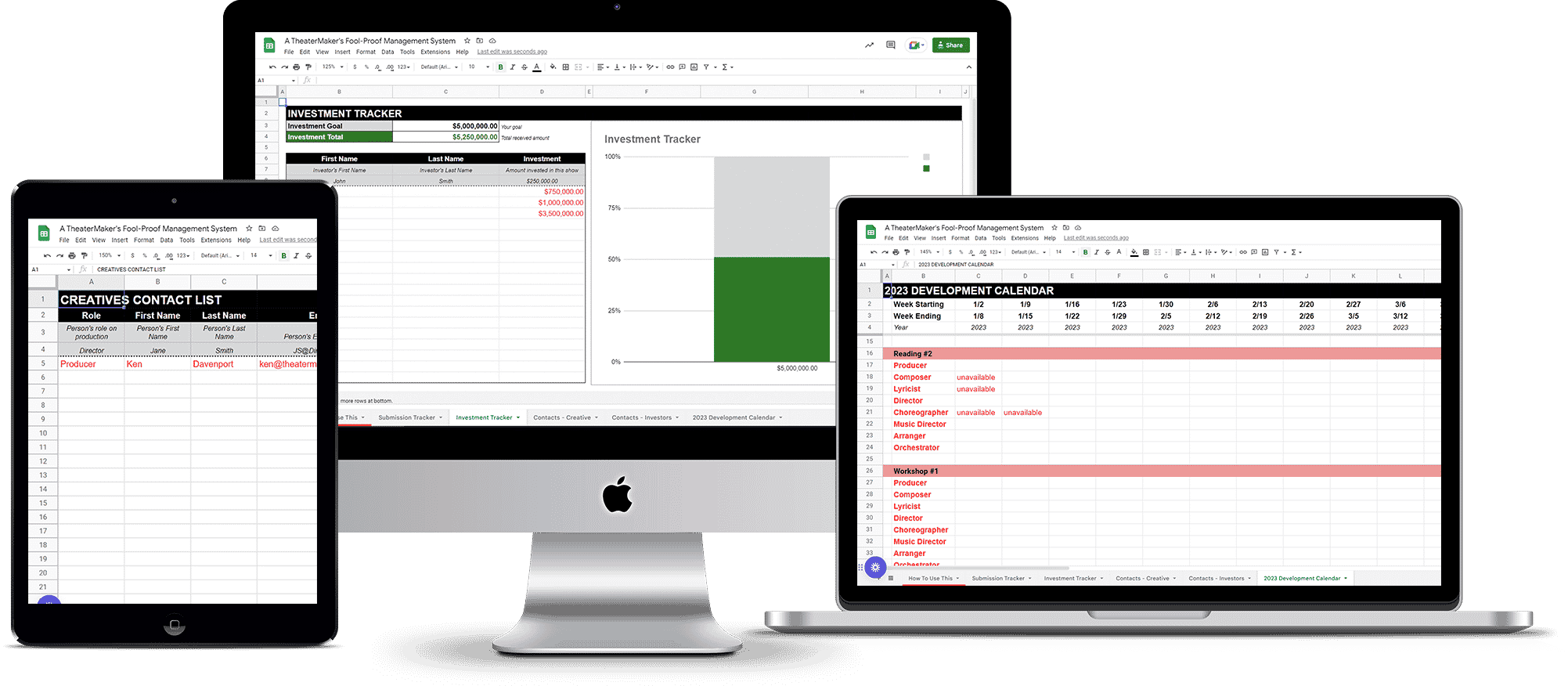
Keep your show organized with the Theatermaker's fool-proof management system
Improve your success rate for getting produced with daily strategy tips.
Related Posts

Here’s a trend that will (and should) continue.
The onslaught of new musicals this spring made folks change-up…

Broadway Grosses w/e 4/28/2024
The top 10 grossing shows from the week ending on…

Tony Awards 2024 Nominations Full List – April 30, 2024
This morning on April 30, 2024, Tony Award winners Renée…

What a “1 for X” Deal Means In Broadway Investing & Producing.
You’ve heard it before. But maybe you haven’t quite understood…
Broadway Grosses w/e 4/21/2024
The top 10 grossing shows from the week ending in…

What Next Season Is Starting To Look Like . . .
As this season winds down, I’m already hearing whispers in…
See All News
Ken created one of the first Broadway podcasts, recording over 250 episodes over 7 years. It features interviews with A-listers in the theater about how they “made it”, including 2 Pulitzer Prize Winners, 7 Academy Award Winners and 76 Tony Award winners. Notable guests include Pasek & Paul, Kenny Leon, Lynn Ahrens and more.
Most Popular

10 Audition Tips for Actors. (Updated 2020)

100 Quotes Every Theater Producer, Playwright, Director, Actor, etc. Must Read (Updated 2021)

10 FAQ about Broadway Investing

Advertisement
Kamala Harris Leads Push to Shore Up Democratic Support From Black Voters
Speaking in Atlanta, the vice president began a national tour to highlight how the Biden administration is trying to help Black Americans economically.
- Share full article

By Maya King
Reporting from Atlanta
- April 29, 2024
Vice President Kamala Harris made a new effort to energize Black voters in battleground states on Monday, visiting Atlanta for the kickoff of a national economic tour that will highlight how the Biden administration says its policies are helping a constituency that will be vital to Democrats’ success in November.
Speaking to a largely Black crowd of about 400 people, Ms. Harris laid out ways that she and President Biden have sought to improve Black Americans’ upward mobility and help them realize their business ambitions. A chief objective of the tour, she said, was to let Black business owners and entrepreneurs know about the resources available to them.
“I need the help of the leaders who are here to get the word out so people know what is available to them,” she said during a conversation at the Georgia International Convention Center with Rashad Bilal and Troy Millings of the financial literacy podcast “Earn Your Leisure,” which offers business advice to its more than two million listeners, a majority of whom are Black.
Explaining how government policies have widened the racial wealth gap over the years, Ms. Harris pointed to the Biden administration’s attempts to try to narrow it, including small-business grants and efforts to forgive student loans.
“We want to make sure people know about it — and then know where they can receive — the support to be ready to take on the work and then to grow their capacity,” she said.
Her remarks at the official White House-hosted event — drier and less political than her forceful campaign speeches on abortion recently — meandered at times.
“As much as anything, the spirit behind the push for access to capital, and in particular, on this tour, focusing on minority small businesses and Black-owned small businesses, and small businesses and entrepreneurs who are Black men, is to recognize the disparities that have existed around the access to the opportunity to achieve success,” she said at one point.
But at other moments Ms. Harris was more pointed, including when she defended diversity, equity and inclusion initiatives that conservative lawmakers have pushed to dismantle in state governments and at colleges and universities .
“In spite of those who in certain parts of our country want to attack D.E.I., we understand that you can’t truly invest in the strength of our nation if you don’t pay attention to diversity, equity and inclusion,” she said.
The vice president’s Atlanta visit, her 12th trip to Georgia since taking office, was the first stop in a tour of several battleground states in the coming weeks. Much of the tour will focus on Black small businesses and economic issues that are especially pressing for Black communities. She will visit Detroit next week, aides said.
Ms. Harris’s tour will also seek to engage Black men, whom Democrats are urgently courting as polls show them softening in their support for Mr. Biden. Much of the crowd at the vice president’s event consisted of Black male political and business leaders, as well as a contingent of students from Morehouse College, a historically Black men’s college in Atlanta where President Biden will deliver the commencement address next month.
Before her speech, Ms. Harris visited an entrepreneurship hub near downtown Atlanta where she spoke with Black small-business owners.
Flanked by Georgia’s Democratic senators, Raphael Warnock and Jon Ossoff, as well as Representative Nikema Williams, the state Democratic Party chair, Ms. Harris highlighted the Biden administration’s marquee legislation, like the CHIPS and Science Act, which offers funding for small-business research projects.
She also underlined the roughly $7 billion that the administration has poured into historically Black colleges and universities, the largest investment of any White House administration.
Atlanta is set to receive more than $150 million for a project called The Stitch that is meant to revitalize the city’s downtown areas and connect them to its growing midtown neighborhoods. Georgia is one of 40 states that will receive money from a White House program that aims to repair the decades-old societal damage from federal transportation projects that disproportionately displaced Black communities.
Maya King is a politics reporter covering the Southeast, based in Atlanta. She covers campaigns, elections and movements in the American South, as well as national trends relating to Black voters and young people. More about Maya King
Our Coverage of the 2024 Election
Presidential Race
As Robert F. Kennedy Jr., an independent candidate, tries to get on the ballot in all 50 states, he’s confronting fierce resistance .
Donald Trump told donors at a Republican National Committee retreat that the Biden administration was like the Gestapo .
Gov. Kristi Noem of South Dakota, defending her tale of shooting and killing her family’s dog, suggested that President Biden’s German shepherd had merited a similar fate .
A Foot Soldier for Trump: Republicans have spent years drawing Latino evangelicals into their fold. One pastor’s conversion shows how Trump is reaping the benefits .
Talk of Escape: At Washington dinner parties, dark jokes abound about where to go into exile if Trump reclaims the White House.
Insulin Takes Center Stage: Biden says lowering the cost of insulin for seniors is among his proudest domestic policy achievements. He now faces the challenge of selling it to Americans of all ages .
Politics Without Trump?: Democrats call Trump dangerous, while Republicans see him as revolutionary. For young Trump voters, he is just normal .

- Brentley Romine ,

- Dustin Long ,

Trending Teams
Pga tour lays out how the player equity program will work.
- Rex Hoggard ,
- Rex Hoggard
In February, PGA Tour commissioner Jay Monahan introduced the rough outline of the Player Equity Program, a vesting plan for the circuit’s new for-profit arm that will carve up a hefty portion of the initial $1.5 billion investment from Strategic Sports Group. On Wednesday, players were given a more detailed version of the program, PGA Tour chief competitions officer Tyler Dennis confirmed on “Golf Central.”
The initial player equity grants will be approximately $930 million distributed to 193 players via four categories, starting with the game’s stars. Monahan informed players on Wednesday via a letter of their individual grants.
“There’s no other sports league in the world that has this significant number of their athletes as owners of their own sports organization,” Dennis said.
“We want to grow the PGA Tour in many different ways and having the alignment of players as player-owners with the organization is going to allow us to drive that quickly forward.”
The first group includes 36 players receiving $750 million in equity based on the last five years of play. “Career Points” will be awarded based on how many years a player has been a Tour member, how many times they earned a spot in the Tour Championship and how many times they have won, with extra points awarded for high-profile victories like the majors, The Players Championship and the FedExCup.
Group 2’s share of the initial equity will be much smaller ($75 million) and will be granted to 64 players. The group is considered “steady performers and up-and-comers” and will be based on FedExCup points earned over the last three years.
Equity to Group 3 will be $30 million going to 57 players based on career earnings and how many times a player finished inside the top 125 in FedExCup points.
The final group will include “past legends,” like Jack Nicklaus and Tom Watson, with $75 million going to 36 players based on the “Career Points” formula. Those grants will only be awarded to “past legends” that are living.
Perhaps most important to players will be the program’s eight-year vesting period. The grants will be worth 50% of their value after four years, 75% after six and 100% after eight years, when a player will be able to sell their equity in PGA Tour Enterprises, the for-profit arm the Tour created for the program. At each vesting benchmark players will be responsible to pay taxes on the grants.
The program has been created to encourage loyalty to the Tour in the face of ongoing challenges from LIV Golf, and the requirements of maintaining membership (which includes a minimum of 15 starts each year) would mean players who join LIV Golf would not be eligible for the program or would give up any unvested equity if they were to join the rival circuit.
“We want the players to be fully aligned with their organization,” Dennis said. “It’s something no other sport has done before and we’re seeing an incredible amount of excitement about that.”
SSG valued the PGA Tour at $12.3 billion when the group, which is led by Fenway Sports, became a minority investor and the assumption is that valuation will continue to increase like most professional sports franchises in the United States.
The remainder of the initial $1.5 billion investment (roughly $600 million) will be awarded in recurring player grants of $100 million each year, beginning in 2025 through 2030. These grants will be awarded based on performance and Player Impact Program results with an eye toward young talent, like Ludvig Åberg or Nick Dunlap.
- Election 2024
- Entertainment
- Newsletters
- Photography
- Personal Finance
- AP Investigations
- AP Buyline Personal Finance
- AP Buyline Shopping
- Press Releases
- Israel-Hamas War
- Russia-Ukraine War
- Global elections
- Asia Pacific
- Latin America
- Middle East
- Election Results
- Delegate Tracker
- AP & Elections
- Auto Racing
- 2024 Paris Olympic Games
- Movie reviews
- Book reviews
- Personal finance
- Financial Markets
- Business Highlights
- Financial wellness
- Artificial Intelligence
- Social Media
PGA Tour players learn how much loyalty is worth in new equity program
Tiger Woods waves after his final round at the Masters golf tournament at Augusta National Golf Club Sunday, April 14, 2024, in Augusta, Ga. (AP Photo/David J. Phillip)
Rory McIlroy, of Northern Ireland, waves after making a putt on the sixth hole during the second round of the RBC Heritage golf tournament, Friday, April 19, 2024, in Hilton Head Island, S.C. (AP Photo/Chris Carlson)
- Copy Link copied

Players who stayed loyal to the PGA Tour amid lucrative recruitment by Saudi-funded LIV Golf are starting to find out how much that loyalty could be worth.
The PGA Tour on Wednesday began contacting the 193 players eligible for the $930 million from a “Player Equity Program” under the new PGA Tour Enterprises .
The bulk of that money — $750 million — went to 36 players based on their career performance, the last five years and how they fared in a recent program that measured their star power.
How much they received was not immediately known. Emails were going out Wednesday afternoon and Thursday informing players of what they would get. One person who saw a list of how the equity shares were doled out said the names had been redacted. The person spoke to The Associated Press on condition of anonymity because many details of the program were not made public.
The Telegraph reported Tiger Woods was to receive $100 million in equity and Rory McIlroy could get $50 million, without saying how it came up with those numbers.
Commissioner Jay Monahan outlined the first-of-its-kind equity ownership program in a Feb. 7 memo to players, a week after Strategic Sports Group became a minority investor in the new commercial PGA Tour Enterprises.
The private equity group, a consortium of professional sports owners led by the Fenway Sports Group, made an initial investment of $1.5 billion that could be worth $3 billion. The tour is still negotiating with the Public Investment Fund of Saudi Arabia — the financial muscle behind the rival LIV Golf league — as an investor.
Any deal with PIF would most certainly increase the value of the equity shares.
Another person with knowledge of the Player Equity Program, speaking on condition of anonymity because of the private nature of the dealings, said the equity money is not part of the SSG investment. That money was geared toward growth capital.
Golf.com received a series of informational videos on the Player Equity Program that was sent to players and reported only 50% of the equity would vest after four years, 25% more after six years and the rest of it after eight years.
It also reported how the 36 players from the top tier were judged on “career points,” such as how long they were full members, victories, how often they reached the Tour Championship and extra points for significant victories.
Jason Gore, the tour’s chief player officer, said in one of the videos, “It’s really about making sure that our players know the PGA Tour is the best place to compete and showing them how much the Tour appreciates them being loyal.”
Emails also were sent to 64 players who would share $75 million in aggregate equity based on the past three years, and $30 million to 57 players who are PGA Tour members. Also, $75 million in equity shares was set aside for 36 past players instrumental in building the tour.
The program has an additional $600 million in equity grants that are recurring for future PGA Tour players. Those would be awarded in amounts of $100 million annually started in 2025.
Players only get equity shares from one of the four tiers now, although everyone would be eligible for the recurring grants.
Even with equity ownership geared toward making the PGA Tour better, the concern was players questioning who got how much and whether they received their fair share.
LIV Golf lured away seven major champions dating to 2018 since it launched in 2022, all with guaranteed contracts and most of them believed to have topped $100 million.
McIlroy, playing this week in the Zurich Classic of New Orleans, was asked how much would make players feel validated for their decision to stay with the PGA Tour.
“I think the one thing we’ve learned in golf over the last two years is there’s never enough,” McIlroy replied.
AP golf: https://apnews.com/hub/golf


"I'm starting to wonder how the PGA Tour differs from LIV Golf" - Andrew ‘Beef' Johnston slams PGA for handing out massive loyalty bonuses
A ndrew "Beef" Johnston criticized the PGA Tour for introducing the new Player Equity Program, which aims to acknowledge players for their loyalty. Over the past two years, the golf world has undergone significant changes with the emergence of the Saudi-backed LIV Golf. Numerous players from various golf circuits worldwide have joined this breakaway series.
Several top-ranked golfers, including Jon Rahm, Phil Mickelson, Dustin Johnson, Brooks Koepka, and Bryson DeChambeau, have been lured to the Saudi Circuit with lucrative offers worth millions of dollars.
Last month, the PGA Tour unveiled its Player Equity Program, distributing grants to players who remained loyal to the Tour. Notably, Tiger Woods and Rory McIlroy received the highest amounts, with $100 million and $50 million, respectively, as reported by The Telegraph.
English golfer Andrew "Beef" Johnston recently criticized the PGA Tour for implementing the new policy. In his blog on Todaysgolfer.com, he voiced his opinion, writing:
"I'm starting to wonder how the PGA Tour differs from LIV Golf. I remember when LIV arrived on the scene and Jay Monahan said his Tour prided itself on being a meritocracy with clear paths for the players and them rewarded for their performances."
He further emphasized how golf has become increasingly focused on money.
"Basically, it's the PGA Tour saying, "Here's a s**t load of money from us for not taking a s**t load of money from them." It's madness, man. Everything has just become about rewarding the top end of the game, and it's come about because of the divide. It is so damaging for our sport," Johnston added.
Adding to the statement, Andrew "Beef" Johnston also criticized the Signature Events of the PGA Tour. The circuit has introduced limited-field, no-cut events with enhanced purses in the series. This is similar to the LIV Golf events, which also feature limited-field, no-cut events, and increased purses.
"The Signature Events are limited field, no-cut events with these enormous purses. Sound familiar? The PGA Tour claimed they took away the cut to guarantee the big names would be there for the whole tournament but that's bullsh*t. How often does Rory miss a cut anyway? It's all about money and the sponsors, not the fans," Johnston added.
Johnston had previously played on the PGA Tour but currently holds membership in the European Tour. He has won five professional tournaments in his career, including one on the European Tour.
What is the PGA Tour's Player Equity Program?
The PGA Tour Player Equity Program benefits all dedicated players on the circuit. The American golf series inked a $3 billion contract with Sports Strategic Group (SSG) to establish PGA Tour Enterprises.
Initially, SSG invested $1.5 billion in the circuit, and PGA Tour players have reportedly benefited from the deal through the new Player Equity Program. Approximately $1 billion will be distributed among PGA Tour players based on four categories.
Around 193 golfers will benefit from the program, with $750 million distributed among 36 players, followed by the next 64 players receiving $75 million in grants. $30 million will be distributed among 57 players, followed by $75 million to the remaining 36 players.

- Student Stories
- Alumni Successes
- Faculty Spotlight
Persevering Through Hardship: Meet Cherrelle Lawrence, Ed.D. ’24
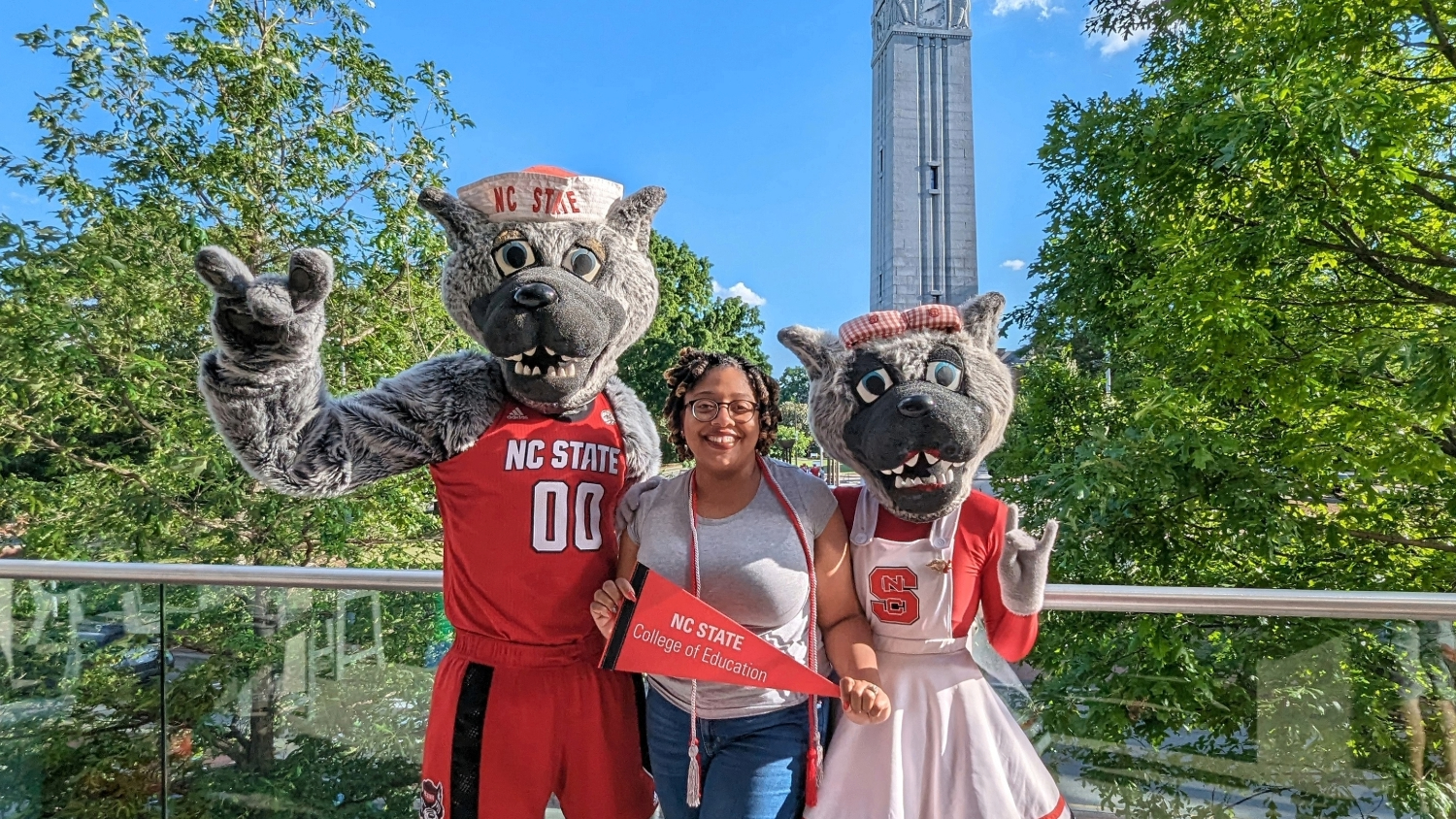
As far as non-traditional student demographics go, Cherrelle Lawrence is fairly… traditional.
Lawrence was a first-generation college student with a passion for education. She was serving as Dean for Corporate Learning and Professional Development at Vance-Granville Community College when she decided to pursue her dream of completing a doctoral degree.
Deeply engaged with the diverse community college student population, she felt particularly drawn to working with first-generation college students like herself.
So, at the urging of her mentor, former Assistant Teaching Professor Carrol Warren , Lawrence enrolled in the NC State College of Education Community College Leadership Program, through which she completed her Doctor of Education (Ed.D) this semester.
Like other graduate programs supporting non-traditional learners, this one has a hybrid structure blending virtual and in-person learning opportunities, and can be completed in three years.
Lawrence was particularly impressed by the Belk Center for Community College Leadership and Research at NC State, whose faculty are committed to advancing equitable college access and student success through impactful research and collaborative practice.
“No other graduate education program in the state struck a chord with me as much as the Community College Leadership program at NC State,” Lawrence said. “Every person I’ve interacted with in the College of Education has been incredibly supportive and knowledgeable.”
While Lawrence might seem like a typical non-traditional student, however, her path to degree completion was anything but typical.
Blazing Trails for Women of Color
Lawrence is an alumna of North Carolina Agricultural and Technical State University (NC A&T), a historically Black college and university (HBCU), and proud member of Sigma Gamma Rho Sorority, a Black service and leadership organization for women who want to effect positive change in society.
From her early years, she has prioritized diversity, equity, belonging and inclusion in her personal and professional pursuits.
“I knew in high school that I would attend an HBCU,” Lawrence said.
A scholarship to study in the business school helped defray the out-of-state tuition costs and her dad, who lived in the area, helped assuage the first year transition for his 17-year-old daughter. A talented cosmetologist, her dad also made sure Lawrence looked fabulous: “I always had the best hair in my class after visiting him,” she said.
After later earning an MBA at East Carolina University, Lawrence worked in higher education leadership roles for many years. During that time, she observed substantial disparities in educational opportunity and access among various demographics, particularly for women of color and other marginalized groups.
An advanced degree would offer her “an avenue to enact meaningful change by advocating for positive, fair and inclusive reforms in educational methodologies,” she explained. It was time to go back to school.
Easier said than done, however.
Her decision to pursue a doctorate coincided with the early days of the COVID-19 pandemic, when so many things were uncertain. Lawrence’s father had recently passed away, her mother was battling breast cancer and her husband Martin, whom she met as an undergrad at A&T, was trying to get a food truck business off the ground.
And there was the endometriosis.
Since the age of 15, Lawrence has struggled with severe pain and the accompanying complications of endometriosis, a relatively common but frequently misunderstood chronic disease of the uterus. Her official diagnosis took years of doctor visits and self-advocacy, inspiring her to create a nonprofit organization, #HerYellowRibbon , that educates women of color about endometriosis and promotes health awareness.

With her advanced understanding of endometriosis, she had a strong desire to serve as a “success story” to encourage others with the same condition. This would entail recovering from the disease and carrying a pregnancy to term. Right before she planned to start her program at NC State, her hopes were dashed when she needed an emergency hysterectomy, due to complications that nearly ended her life.
Needless to say, it was a rough time. She didn’t enroll at NC State after all and wasn’t sure she ever would. That is, until an unusual intervention rekindled her interest. Her friends, her family and her mentor Carrol Warren surrounded her with support and helped her to find the strength to move forward.
“After so much struggle, so much sacrifice ,” Lawrence said, “it was time for me to fuel the fire of my passion for education.”
Cultivating Equity-minded Leadership Skills
Finally enrolling at NC State in May 2021, Lawrence hit the ground running.
Among other honors, Lawrence was selected as a Belk Center Fellow , representing her program in 2022 at the League for Innovation in the Community College national conference and as Lead Fellow for the Belk Center Fellowship Program at the 2023 Achieving the Dream conference in Chicago.
Lawrence thrived in this program that used the flipped classroom approach because it challenged her to demonstrate her understanding of concepts by teaching and learning from her peers. She found the concepts of educational theory, instructional design and adult learning principles particularly interesting.
She also appreciated the depth of experience and diversity of voices that guest lecturers added to the learning experience. “From start to finish, I found myself consistently engaged and stimulated in this program,” she said.
Navigating the transition from remote to in-person after the pandemic proved challenging but ultimately beneficial: “We managed to establish a balance that allowed for meaningful in-person interactions,” Lawrence said, “fostering stronger bonds among our cohort.”
“Working and learning alongside my cohort for the past three years has been an honor,” she continued. “They are truly passionate about their work and bring so much value to higher education.”
Lawrence’s focus was on dismantling systemic barriers to racial and economic equity in education. She conducted her dissertation research on forming partnerships between HBCUs and external corporate partners. But when her then-committee chair left NC State in the summer of 2023, Lawrence thought she might have to start over.
Then Carrol Warren — whose research interests closely parallel Lawrence’s — stepped in to serve as Lawrence’s dissertation chair.
“ Dr. Warren saved me a second time ,” Lawrence said. “It was a reminder of how our actions as educators, however big or small, can have a profound effect on the lives of students.”
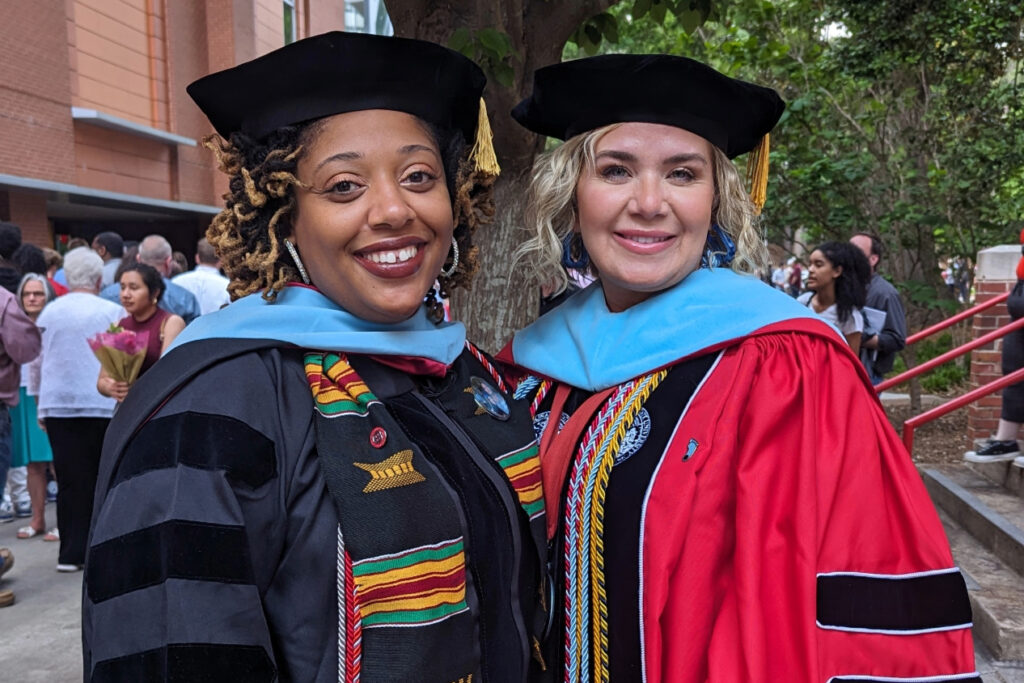
Centering Community
Lawrence credits her many successes to the support of her communities: her student cohort and faculty mentors, her husband and family, work colleagues, her faith community, and friends — especially her best friend, fellow NC State Ed.D ‘24 graduate Tiffani Polk .
“Having a strong support system is key for maintaining balance with the demands of work, personal life and your educational pursuits,” she said. “There will be moments of challenge along the journey, and the support of your people will help you thrive.”
Although she enjoys her current job leading learning and development at a prominent consulting firm, Lawrence hopes to transition back into higher education, ideally in a teaching role: “I love education because it fosters opportunities for creativity, personal growth and the cultivation of meaningful relationships,” she said. “I feel like education is my life’s calling.”
Given the many challenges life has given her, it’s no surprise that Lawrence is a big believer in celebrating accomplishments. During the Ed.D. program, she and Polk took trips together at the end of almost every semester: Florida, Georgia, Washington D.C. and Texas are among their favorite shared destinations.
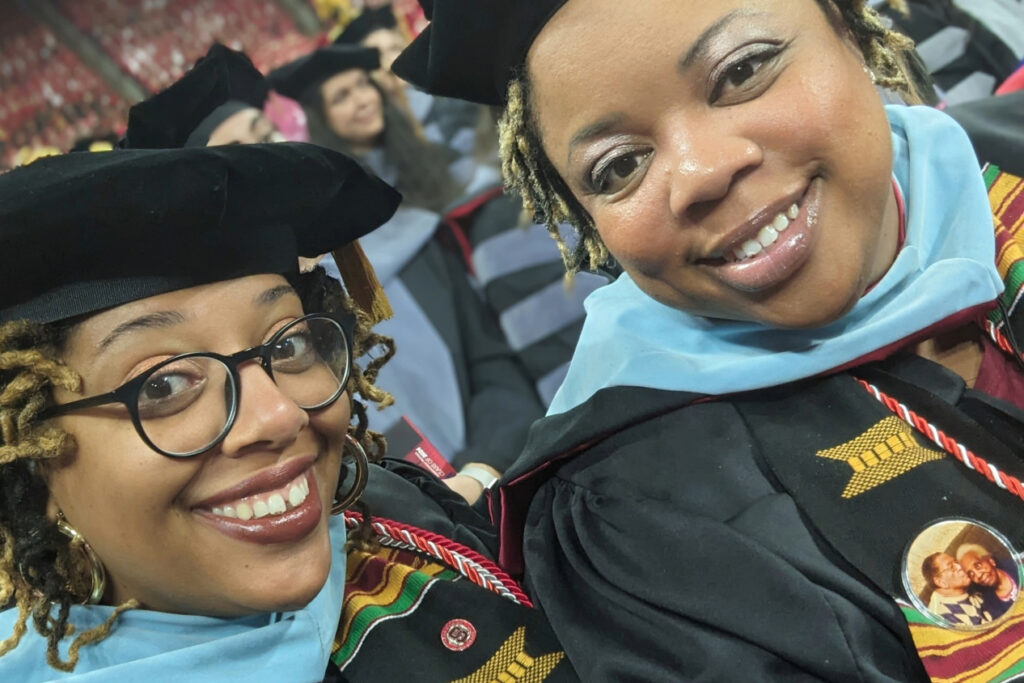
This spring, Lawrence will be traveling to Hawaii. Ostensibly for work, the trip will also commemorate the accomplishment of finishing her degree.
“Obtaining a doctorate at 35 was an ambitious goal I set for myself,” she said. “This doctorate serves as evidence that I can achieve anything I set my mind to.”
As well as taking trips, Lawrence loves to reward herself with shoes. She nonetheless holds herself to a strict spending limit on them. Knowing this, her husband Martin — whose small business, by the way, is thriving and considered the best food at the NC State Fair — began celebrating Lawrence’s accomplishments with gifts of shoes.
Among her favorites are a pair of Air Jordans and a pair of red, white and black Nikes that she calls her “NC State shoes.” She’s worn them to various NC State events — most recently, after she delivered remarks to 2024 graduates in the College of Education at the department commencement ceremony.
“Cherrelle’s story is unique,” said Warren, who was one of Lawrence’s nominators for the honor of graduation speaker, “and one that truly captures the essence of a successful non-traditional graduate student in education.”
Overcoming so much hardship while navigating the many barriers to her success made Lawrence’s educational journey that much more meaningful.
“I loved my experience in this program,” she said. “It was truly rewarding.” Want to serve your communities in the highest capacity? NC State can help! Learn more about the nationally recognized Ed.D. program in Community College Leadership .
- College of Education
- Graduate Programs
- Online Education
More From NC State Online and Distance Education

Tala Dahmash ’24MED: ‘Learning is a Lifelong Journey, and Adult Education Allows Individuals to Continually Adapt, Grow and Thrive in an Ever-changing World’

Jacqueline Verkuilen ’23, ’24MED: ‘Learning Design and Technology Has Perfectly Allowed Me to Thrive at My Talents and Hit on My Interests’
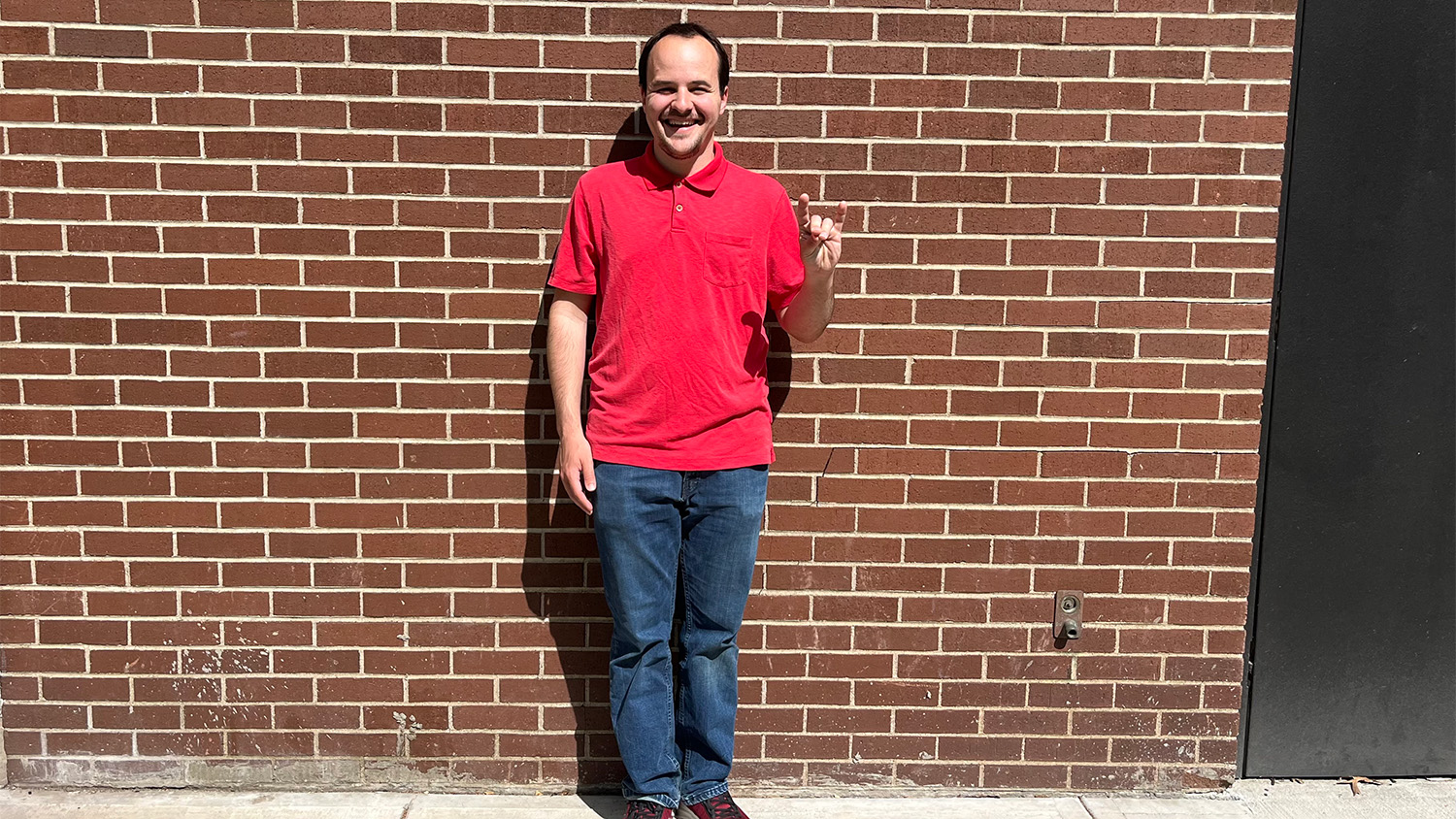
Online Grad Pursues Passion for Statistics

Follow Playing Through online:
- Follow Playing Through on Twitter
- Follow Playing Through on Instagram
- Follow Playing Through on Facebook
Site search
- Champions Tour
- DP World Tour
- Latest News
Filed under:
Tiger Woods to land $100M, PGA Tour equity payments for loyalty, revealed
The new PGA Tour Enterprises equity payments for 193 players who remained loyal has been unveiled.
If you buy something from an SB Nation link, Vox Media may earn a commission. See our ethics statement .
Share this story
- Share this on Facebook
- Share this on Twitter
- Share this on Reddit
- Share All sharing options
Share All sharing options for: Tiger Woods to land $100M, PGA Tour equity payments for loyalty, revealed
/cdn.vox-cdn.com/uploads/chorus_image/image/73302472/Screenshot_2024_04_24_at_12.00.44_PM.0.png)
PGA Tour Enterprises , the newly formed for-profit entity, is prepared to dole out massive sums of money to reward player loyalty amid the LIV Golf discord.
The PGA Tour struck a deal with Strategic Sports Group worth up to $3 billion three months ago. As part of the fundraising efforts, the Tour will disseminate hundreds of millions of dollars to its membership, per The Telegraph.
Tiger Woods, the 15-time major champion, will receive the largest sum upwards of $100 million. Rory McIlroy will net a cool $50 million. Other top players like Jordan Spieth and Justin Thomas will earn $30 million.
:no_upscale()/cdn.vox-cdn.com/uploads/chorus_asset/file/25416321/2149024891.jpg)
The entire payout structure to all players has yet to be made public.
Nearly two thirds of the money infused into the company will be handed out via equity shares. However, a safeguard was put in place to avoid players taking the money and then jumping ship for LIV Golf.
Fifty percent of the money will be vested after four years on Tour. Another 25 percent will be added two years after that and all 100 percent will be vested after eight years.
There are a number of factors that determined a players’ worth.
Chief among them are the ‘career points’ and how players have fared through the Player Impact Program (PIP).
The former is a model that looks at career achievements through the lens of longevity. The latter, which was established a couple of years ago to combat the money thrown by LIV at players, takes into account how an individual has helped promote and grow the sport through ticket sales, sponsorships, media consumption and fan engagement.
Understandably, Woods would top the list. He continues to move the needle . One just needs to look at The Masters less than two weeks ago.
Television ratings were initially up as Woods performed well and made the cut for the 24th consecutive appearance, setting a new PGA Tour record . However, after he faltered to historic lows Saturday, ratings plummeted during the weekend.
The Tiger Woods effect is a problem that the PGA Tour and professional golf is still yet to solve.
However, if a deal is ever reached between LIV and the PGA Tour, bringing the best players together might at least stem the tide.
Kendall Capps is the Senior Editor of SB Nation’s Playing Through. For more golf coverage, follow us @_PlayingThrough on all major social media platforms.
Next Up In Golf
- Beloved PGA Tour pro calls out LIV Golf players for excessive cursing at Masters
- PGA Championship: Talor Gooch reacts to shocking invite despite LIV Golf OWGR beef
- Wells Fargo Championship: How to watch, streaming, format, preview, tee times, and more
- Wells Fargo Championship: Odds, predictions, value picks for next PGA Tour event
- TGL: Tiger and Rory’s Bay Golf Club announced, completing 6th and final team
- Reggie Bush, TravisMathew changing the face of golf fashion impeccably
Loading comments...
Sign up for the newsletter sign up for the playing through daily roundup newsletter, thanks for signing up.
Check your inbox for a welcome email.
Oops. Something went wrong. Please enter a valid email and try again.
- Health Equity
- COVID-19 and Health Equity
- Mechanisms for Advancing Health Equity
- Racism as a Public Health Crisis
- Reproductive Health and Equity
- Healthy Living
- Cannabis Legalization and Regulation
- Injury Prevention and Safety
- Maternal and Child Health
- Mental Health and Well-Being
- Oral Health
- Substance Use Prevention and Harm Reduction
- Healthy Communities
- Environment, Climate and Health
- Food Safety and Security
- Health in School
- Healthy and Affordable Housing
- Tribal Health
- Improved Access to Care
- Health Reform
- Workforce Expansion
- Empowered Public Health System
- Becoming Better Messengers
- Emergency Legal Preparedness and Response
- Health Information and Data Sharing
- Mechanisms for Advancing Public Health
- Public Health Authority
- View All Resources
- News & Insights
- Law & Policy Insights
- News & Announcements
- Network Report
- Judicial Trends
- Events & Webinars
- Conferences & Summits
- 2024 Fall Summit
- 2023 Public Health Law Conference
- 2022 Fall Summit
- 2022 Climate Summit
- 2021 Virtual Conference
- 2020 COVID-19 Summit
- Projects & Initiatives
- de Beaumont Data Consultations Project
- Flint Water Crisis
- Great Lakes Integrated Sciences and Assessments Project
- Harm Reduction Legal Project
- Oral Health Project
- Initiatives
- Act for Public Health
- Collaboration for Antiracism and Equity
- Cross Sector Attorneys
- East Side Health and Well-Being Collaborative
- Medical-Legal Partnerships
- School Nursing
- State Privacy Officer Group
- Fighting for Public Health
- Five Essential Public Health Law Services
- Partner With Us
- How to Partner
- Impact Stories
- Careers With the Network
- Our Supporters & Partners
- Media Inquiries

Effective, Equity-focused Overdose Good Samaritan Laws: Maine Leads the Way
May 2, 2024
by Corey Davis
Overdose Good Samaritan laws, which generally provide limited protections from arrest or prosecution for drug-related crimes, have been passed in most states. The limited protection these laws offer is often insufficient. A recently passed law in Maine that provides immunity from all but a small number of crimes, while not perfect, is a step towards improving the effectiveness of these laws.

When crafting a law or policy, it can be helpful to start with a basic question: What is the law intended to accomplish?
The underlying goal of the body of law often referred to as the “War on Drugs” is typically to stigmatize and punish people who use drugs. Enormous effort is directed towards those goals; indeed, more arrests are made each year for drug violations than for every other category of crime. The vast majority of those arrests — approximately 87 percent , or more than 1.3 million in 2019 — are for possession, not sales or trafficking. As with nearly every other aspect of the criminal legal system, Black people are arrested, charged, and imprisoned for drug crimes at much higher rates than white people , despite the fact that people of both races use illicit drugs at about the same rates .
People who use drugs — particularly people of color — know this , which is why they are often reluctant to call for help during an overdose. Overdose Good Samaritan laws have been proposed as a solution to this problem. While these laws vary by state, most provide immunity from arrest or prosecution for low-level drug crimes to the person who calls for help in an overdose, as well the person who overdosed. Evidence of the effectiveness of these laws is mixed, with most studies showing that those that provide more protection do reduce overdose deaths , but not by very much.
This is likely because most overdose Good Samaritan laws do not address many of the concerns of people who are deciding whether to call for help. Those concerns include being arrested for crimes not covered by the law, or on an outstanding warrant. Additionally, many fear that calling for help might result in eviction, an investigation by Child Protective Services, or loss of federal or state benefits. These fears are well-founded, as many people who call for help in an overdose are arrested for petty crimes like trespassing, or on a warrant for a minor crime like an unpaid traffic ticket. Still others simply decide not to call at all.
However, one state has enacted an overdose Good Samaritan law that makes criminal immunity the default, not the exception. In Maine, the person who calls for help, anyone who renders aid, and the person who is experiencing a suspected drug-related overdose are all immune from arrest and prosecution for all but a small number of crimes. The excluded crimes – things like kidnapping, robbery, and sexual assault – do not generally apply in the context of a call for help in an overdose.
The Maine law is not perfect. For example, it does nothing to address the many non-criminal consequences like evictions and CPS investigations that may occur when authorities are alerted to an overdose. However, it is a step in the right direction, and the only such law that is compatible with the aim towards which Good Samaritan laws should be directed: that of saving lives.
This post was written by Corey Davis, Director, Harm Reduction Legal Project, Network for Public Health Law.
The Network for Public Health Law provides information and technical assistance on issues related to public health. The legal information and assistance provided in this document do not constitute legal advice or legal representation. For legal advice, readers should consult a lawyer in their state.
Support for the Network is provided by the Robert Wood Johnson Foundation (RWJF). The views expressed in this post do not represent the views of (and should not be attributed to) RWJF.
FTC Noncompete Rule’s Tentacles Reach M&A and Private Equity

The Federal Trade Commission’s final rule banning noncompete provisions in contracts will have broad implications for employers and employees in the labor and employment context. It will also impact businesses and their owners entering into sale transactions and any other transactions involving noncompetes.
The final rule, released April 23, defines a “non-compete” as a term or condition of employment that prohibits a worker from, penalizes a worker for, or functions to prevent a worker from seeking or accepting work in the US with a different person where such work would begin after conclusion of employment that includes the term or condition; or operating a business in the US after the conclusion of the employment that includes the term or condition.
A “worker” must be a natural person who works or previously worked, whether paid or unpaid. The final rule intentionally omits a definition for “employer” to ensure that it covers all workers regardless if they work for the same person who hired or contracted with them to work, and to avoid evasion of the final rule through complex employment relationships.
Notably for merger and acquisition transactions, the final rule adopts a sale of a business exception that permits entering into a noncompete with a person who is selling a business entity or otherwise disposing of all of the person’s ownership interest in a business entity in a “bona fide sale.”
The FTC requires a bona fide sale to be a sale “made in good faith as opposed to, for example, a transaction whose sole purpose is to evade the final rule,” and generally considers a bona fide sale to be a sale between two independent parties at arm’s length, and in which the seller has a reasonable opportunity to negotiate the terms of the sale.
The FTC declined to include the requirement contained in its earlier proposed rule that the restricted party be a substantial owner of the business holding at least a 25% ownership interest in a business entity, therefore, the exception applies to any person, regardless of ownership percentage.
The commentary to the final rules specifies that certain transactions won’t be considered a “bona fide sale,” including “springing” noncompetes that become effective upon the breach of a contractual obligation or duty, or noncompetes that arise out of repurchase rights and mandatory stock redemptions, including, for example, a noncompete that automatically becomes effective upon the redemption of a worker’s vested equity interest.
The rationale is that in these cases the worker that would be bound by the noncompete doesn’t have goodwill they are exchanging for the noncompete or sufficient bargaining power to negotiate the terms or conditions of the sale and the non-compete.
For example, workers with mandatory stock redemptions in connection with the sale of their employer couldn’t be bound by a noncompete in connection with the sale. Additionally, transactions between two wholly owned subsidiaries wouldn’t be considered bona fide sales since these transactions aren’t at arm’s length between two independent parties.
Parties to sale transactions that involve noncompetes should ensure transactions are structured as an arm’s length sale between two independent parties and that sellers subject to a post-sale noncompete are represented by counsel in connection with negotiation of the terms of the sale and the noncompete.
Additionally, given the FTC’s focus in the commentary to the final rules on the importance of goodwill in a bona fide sale, ideally a material portion of the consideration received in exchange for the interest of a party bound by a noncompete should be based on the goodwill in the business being sold by the restricted party.
There is significant uncertainty for investment funds regarding the applicability of the final rule to carried interest vehicles such as a partnership or LLC. While the final rule provides that it only applies to workers who are natural persons, it doesn’t specify whether it applies to noncompetes entered into in the context of individual partners or members of a partnership or LLC outside of an employer-employee relationship.
Parties that enter into such non-competes should be aware that they may face legal challenge and have uncertain enforceability, particularly in light of the decision by the FTC not to provide a definition for what qualifies as an “employer” in the final rule.
It is expected, however, that the final rule will permit noncompetes that apply to an entity general partner in a partnership, enabling, for example, private equity funds entering into noncompete agreements with their entity general partners. However, any such noncompetes couldn’t apply to a specific individual involved in the operation and management of a restricted general partner.
Businesses concerned about the effect of the final rule on the protection of confidential business information and other valuable intellectual property should consider and implement alternative means of protecting such information, including, for example, nondisclosure agreements, non-solicitation agreements, enforcement of intellectual property rights under trade secret and patent laws, invention assignment agreements, and taking measures to better retain employees.
The final rule is expected to take effect in late August, 120 days after publication in the Federal Register. Legal challenges, some already pending, could delay enforcement.
This article does not necessarily reflect the opinion of Bloomberg Industry Group, Inc., the publisher of Bloomberg Law and Bloomberg Tax, or its owners.
Author Information
Donald Hammett is partner in Alston & Bird’s investment funds group and co-leader of the firm’s REIT team.
Christina Heddesheimer is a senior associate in Alston & Bird’s investment funds group.
Write for Us: Author Guidelines
To contact the editors responsible for this story: Jessie Kokrda Kamens at [email protected] ; Alison Lake at [email protected]
Learn more about Bloomberg Law or Log In to keep reading:
Learn about bloomberg law.
AI-powered legal analytics, workflow tools and premium legal & business news.
Already a subscriber?
Log in to keep reading or access research tools.

IMAGES
VIDEO
COMMENTS
Equity and Non-Equity Tours Explained. In the world of US theatre, productions are often categorised into two main types: equity and non-equity productions and tours. This classification is crucial for performers, creators, and the audience alike, as it impacts everything from the rights of actors to the quality and reach of the productions.
Equity strives to have a comprehensive list of all Equity and non-Equity tours. If you are aware of any work that should be added to this list, please contact Gabriela Geselowitz ([email protected]). EQUITY TOURS & Juliet. Aladdin. Back to the Future. Beetlejuice. Clue Live on Stage. Company. Frozen. Funny Girl. Girl from the North ...
*A note about Equity versus non-Equity tours: Many touring productions are marketed as "direct from Broadway"—but performers and stage managers on Broadway work under Actors' Equity ...
When I was non-equity, I did non-equity tours. And I've done Equity tours as well. The differences in many cases are obvious; there's usually more money in an Equity tour so the production values can be higher, but aren't necessarily. But I loved all of the shows, most of my co-workers (only human folks), and the experiences.
Non-Equity Tour launches January 14, 2023. The Simon & Garfunkel Story is a critically acclaimed concert-style theatre show about two young boys from Queens, New York who went on to become the ...
Personal example: I played Ravenal (the male lead) in a Non-Equity tour of Show Boat, and I shared a room with not one but two cast mates, both very good friends, to save money. We would get a room with two beds, and every third week, one of us would sleep either on a cot or on the floor. Hi ho, the glamorous life.
For equal work, they should receive equal protections and equal pay," shares Actors' Equity Executive Director Al Vincent, Jr. Led by Jisel Soleil Ayon as Jenna, the non-union tour cast of ...
SHOWS ON TOUR Equity strives to have a comprehensive list of all Equity and non-Equity tours. Learn more about why the union status of touring productions matters at Ask If It's Equity. STUDIO RENTALS Actors' Equity Association offers studio space for rent at our audition centers in New York City, Chicago and Los Angeles. THEATRE AUTHORITY
#7 re: What does 'equity tour' and 'non-equity tour' mean? Posted: 1/25/06 at 10:04pm. I agree. The first time I saw A Chorus Line, I saw with a bus and truck non-equity company at the opera house in Galveston, TX and I LOVED the show. A few months later, I went to NYC and bought a ticket for A Chorus Line on Broadway and was very disappointed.
#19 re: difference between equity and non equity tours Posted: 1/5/07 at 10:24am. I have no problem with non-equity tours if a show has played out equity tours first, such as RENT. However if SHNSF ever makes a non-equity tour part of their "Best Of Broadway" series, they will get a piece of my mind.
Non-Equity tours are expected to be a, if not the, major issue on the table. The current Production Contract (which governs Equity work in Broadway and touring productions) is due to expire June ...
Non Equity Auditions. Add a Non-Equity Audition Listing. Updated: May 02, 2024 - Upcoming Broadway auditions, regional theater auditions and national tour theatre casting calls, with data provided ...
According to Equity's Mobilization Director, Stefanie Frey, the main impetus to unionize the tour was the fact that there are two Waitress tours currently running: one union, the other nonunion ...
2/10/2013 - 3/3/2013. OPEN Dancers. Get Audition Information. Find Non Equity Auditions for National Tour with a complete list of all upcoming non-Equity auditions!
Equity is the union for theatre actors and stage managers. It takes a certain amount of experience to join equity, so actors who are equity are seen as experienced and professional. A lot of regional theatres, all of Broadway, and many tours will cast mostly or entirely equity actors. But there's still professional productions that are non-equity.
The non-Equity tours also play a part in the other major issue of the forthcoming talks: health care. Recent years have been hard on Equity, in part because of a steady decline in work weeks on ...
And most importantly, the audience didn't seem to mind (new scenic technology and better training programs for young performers resulted in a much higher quality production than previous non-union productions). By 2004, according to Actors Equity's own website, 40% of the one-week touring market had gone non-Equity. Gulp.
Principals on Broadway usually make $3-10k. Overages (percentage of box office past certain threshold) on union tour contracts at times, make up the difference, but usually only for very hot ticket shows. These nonunion actors will be paid well below equity minimum and won't have those overages.
Ms. Harris's tour will also seek to engage Black men, whom Democrats are urgently courting as polls show them softening in their support for Mr. Biden. Much of the crowd at the vice president ...
Audiences are being duped with Non-Equity tours. I went to see My Fair Lady in Boston last night. It was at the Boston Opera House and it was advertised in multiple places as being the tour of the "Lincoln Center Production." Imagine my surprise when I look at the program and realize it is a Non-Equity tour. The production values were all very ...
Health equity seeks to address that. "Health equity means that we achieve health that is as equal as possible, within the constraints of things we can fix," said Dr. Sandro Galea, dean of the School of Public Health at Boston University. Because explanations of health equity overlap with terms such as inequality and justice, metaphors come in ...
Perhaps most important to players will be the program's eight-year vesting period. The grants will be worth 50% of their value after four years, 75% after six and 100% after eight years, when a player will be able to sell their equity in PGA Tour Enterprises, the for-profit arm the Tour created for the program.
The PGA Tour on Wednesday began contacting the 193 players eligible for the $930 million from a "Player Equity Program" under the new PGA Tour Enterprises. The bulk of that money — $750 million — went to 36 players based on their career performance, the last five years and how they fared in a recent program that measured their star power.
Non-Equity tours are expected to be a, if not the, major issue on the table. The current Production Contract is due to expire June 27. Initial negotiations dates have not yet been determined.
Earlier this year, the PGA Tour and Strategic Sports Group made a deal worth up to $3 billion. Reports suggest that part of that money will be given to PGA Tour players as equity payments for ...
The PGA Tour Player Equity Program benefits all dedicated players on the circuit. The American golf series inked a $3 billion contract with Sports Strategic Group (SSG) to establish PGA Tour ...
Cultivating Equity-minded Leadership Skills Finally enrolling at NC State in May 2021, Lawrence hit the ground running. Among other honors, Lawrence was selected as a Belk Center Fellow , representing her program in 2022 at the League for Innovation in the Community College national conference and as Lead Fellow for the Belk Center Fellowship ...
PGA Tour Enterprises, the newly formed for-profit entity, is prepared to dole out massive sums of money to reward player loyalty amid the LIV Golf discord.. The PGA Tour struck a deal with ...
The increasing need for access to naloxone to reverse opioid-related overdoses has drawn the interest of pharmaceutical companies who see an opportunity to market new, non-generic, more potent opioid antagonist products. State lawmakers have made changes in policy based on these marketing efforts. However, early research suggests that these high dose drugs are unnecessary and pose significant ...
The final rule, released April 23, defines a "non-compete" as a term or condition of employment that prohibits a worker from, penalizes a worker for, or functions to prevent a worker from seeking or accepting work in the US with a different person where such work would begin after conclusion of employment that includes the term or condition ...